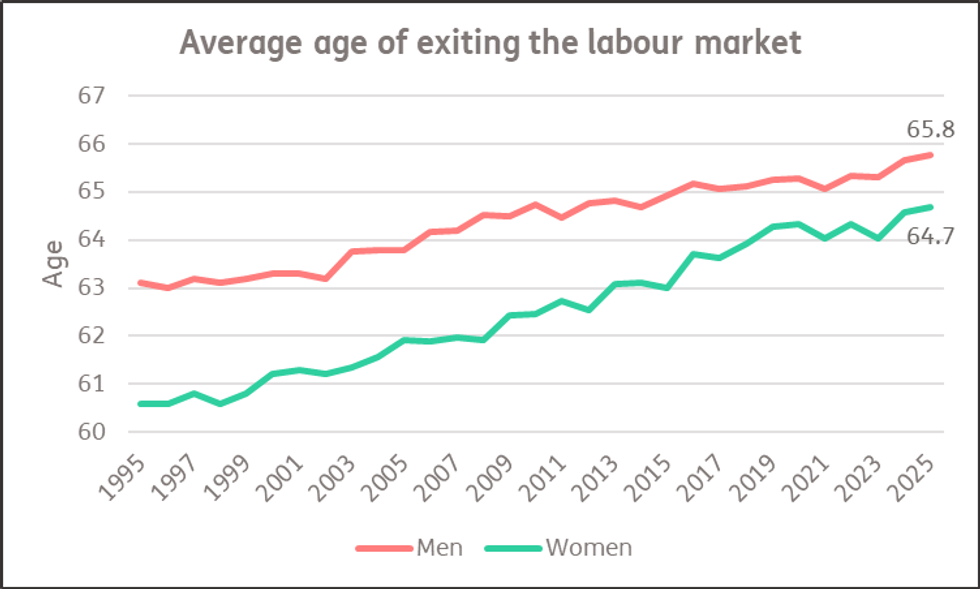Pension crisis as retirement age soars with nearly 900,000 older Britons looking for work: 'Growing problem!'

Data shows workers staying in jobs longer but many aged 50 to 64 still face employment struggles
Don't Miss
Most Read
Government data has revealed that British workers are staying in employment longer than ever before, with retirement ages reaching record levels.
Men are now typically leaving the workforce at 65.8 years, while women retire at an average age of 64.7.
These figures represent the highest retirement ages on record - marking a substantial shift from the early 2000s, when men typically stopped working at about 63 and women at around 61.
The Department for Work and Pensions (DWP) analysis examined economic activity patterns among people over 50.
TRENDING
Stories
Videos
Your Say
At age 65, employment figures show that 42 per cent of men remain in work, compared with 29 per cent of women.
Both percentages have increased in recent years, a trend attributed primarily to changes in the state pension age.

Pension crisis as retirement age soars with nearly 900,000 older Britons looking for work: 'Growing problem!'
| GETTYHowever, employment challenges continue to affect the 50 to 64 age bracket.
The latest figures show that 876,000 people within this demographic are either actively job-hunting or would welcome employment opportunities.
This marks a rise from the 750,000 recorded just twelve months earlier.
The increase highlights persistent difficulties faced by older workers in securing positions, despite their skills and experience.
The 876,000 figure includes 304,000 unemployed individuals actively searching for work and 572,000 who are economically inactive but willing to take up employment.

Average age of exiting the labour market
|ONS/Just Group
Stephen Lowe, group communications director at retirement specialist Just Group, said: "These are some of the most skilled and experienced workers in the country. For the economy to grow, we need to see many more of these people returning to productive roles in the workforce."
The gap between those seeking work and available opportunities remains a concern for this age group.
The broader employment picture for 50 to 64-year-olds shows mixed trends.
Current employment stands at 71.6 per cent, below the 72.6 per cent peak recorded in 2019 before the pandemic.
Economic inactivity in this group, which includes those who are unwell, retired, or managing household responsibilities, has decreased from 27.3 per cent in 2024 to 26.1 per cent.
This remains higher than the 25.5 per cent recorded before Covid disrupted the labour market in 2019.
Nearly three-fifths of workers are not in employment during the twelve months before reaching state pension eligibility.
Mr Lowe said: "With the rises in state pension age and life expectancy it is making more financial sense to work until later in life, which is what the figures reveal."
The data suggests that while more people are extending their careers, significant numbers still exit employment well before pension age.
The employment gap for older workers carries economic implications.
LATEST DEVELOPMENTS:

Mr Lowe said the lack of opportunities for that age group remained a serious and increasingly concerning issue.
| Getty ImagesThe increase in those seeking work, rising by 126,000 in just one year, highlights the urgency of addressing barriers facing this group.
Mr Lowe said: "The lack of opportunities for this age group remains a real and growing problem."
His assessment points to how businesses may be overlooking experienced workers. The combination of rising retirement ages and unemployment among 50 to 64-year-olds creates a paradox.
While financial pressures and pension age changes encourage longer working lives, many cannot secure employment despite their willingness to work.
The figures suggest a need for targeted interventions to support older workers.
More From GB News










